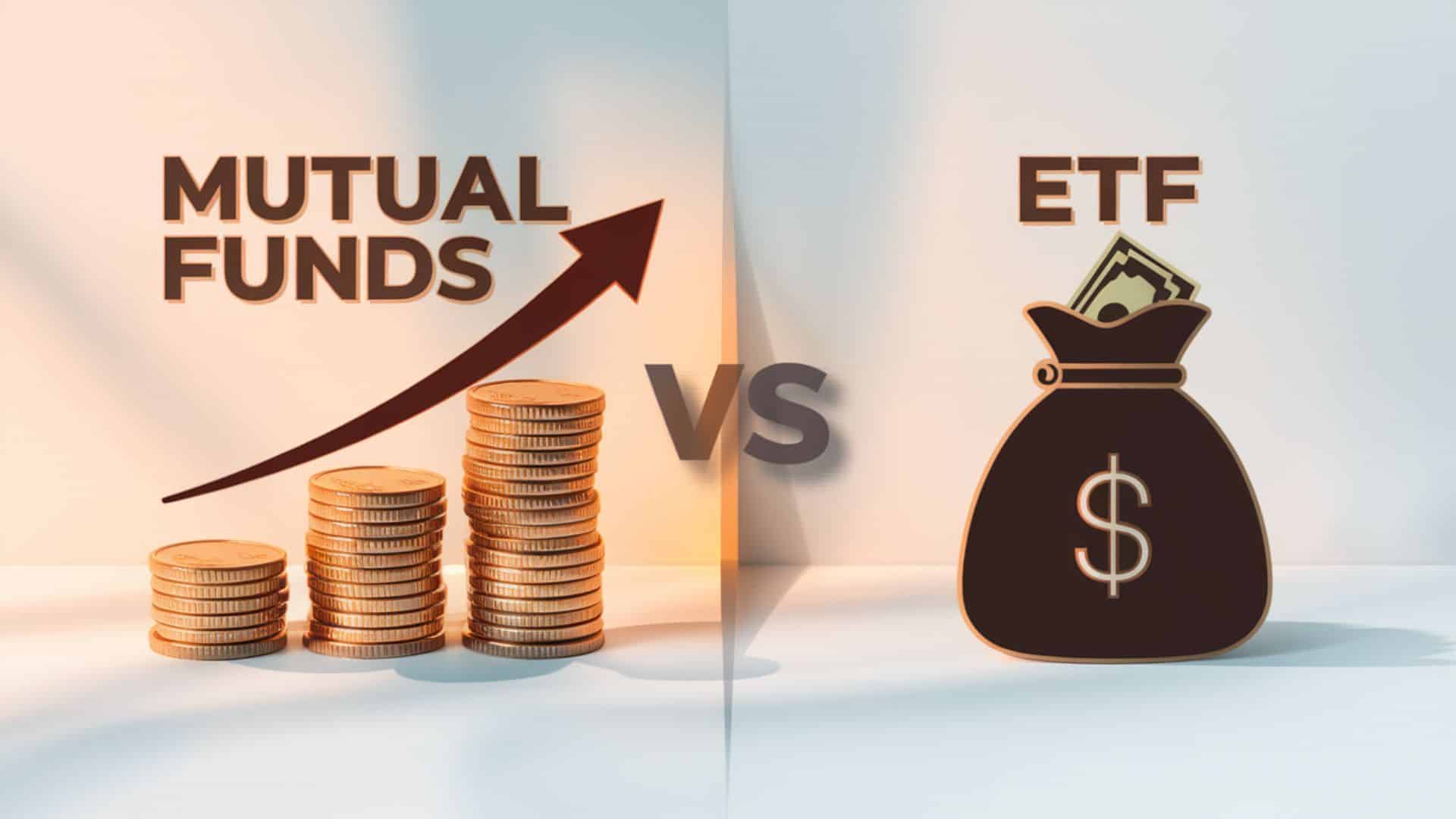Are you standing at the crossroads of investment decisions, wondering whether ETFs or mutual funds deserve your hard-earned money?
Millions of investors face this exact dilemma every day. Both investment vehicles can help you build wealth, but they work in completely different ways.
The choice between them could significantly impact your returns, fees, and overall investment experience. Understanding the key differences isn’t only helpful but also essential for making informed financial decisions.
This blog highlights the key differences between ETFs and mutual funds, their unique advantages and drawbacks, and helps you determine which option aligns best with your investment goals and lifestyle.
What Are ETFs and Mutual Funds?
ETFs and mutual funds are popular investment options that pool money from many investors to buy a diversified mix of assets.
Exchange-Traded Funds (ETFs)
ETFs are investment funds that trade on stock exchanges just like individual stocks. Think of them as baskets holding multiple securities, stocks, bonds, or other assets that you can buy and sell throughout the trading day.
Key characteristics of ETFs:
- Trade during market hours
- Usually track an index
- Typically have lower expense ratios
- Expense ratios range from 0.03% to 0.75% annually
- Offer instant liquidity
Mutual Funds
Mutual funds pool money from many investors to purchase a diversified portfolio of securities. Unlike ETFs, they’re priced once daily after market close.
Key characteristics of mutual funds:
- Priced once per day
- Can be actively or passively managed
- Often require minimum investments
- Transactions process after market close
- Expense ratios: 0.5%–2.0% annually (includes up to 1% marketing fees)
- Sales loads: Up to 5.75% upfront or when selling
ETF vs Mutual Fund: Key Differences
Here’s a quick comparison of key features that highlight the differences between ETFs and mutual funds.
| Feature | ETFs | Mutual Funds |
|---|---|---|
| Trading | Anytime during market hours | Once daily after market close |
| Minimum Investment | Price of one share | Often $1,000-$3,000 |
| Expense Ratios | Generally 0.03%-0.75% | Typically 0.5%-2.0% |
| Tax Efficiency | More tax-efficient | Less tax-efficient |
| Management Style | Mostly passive | Active or passive options |
Understanding these differences can help you choose the investment option that best fits your financial goals and preferences.
Trading Flexibility and Liquidity

Trading flexibility and liquidity are key factors to consider when choosing between ETFs and mutual funds.
ETFs offer more trading flexibility throughout the day, whereas mutual funds trade only once daily, after the market closes.
ETF Trading Advantages
- Buy and sell anytime during market hours
- Set limit orders and stop-losses
- No minimum holding periods
- Real-time pricing
Mutual Fund Trading Limitations
- Transactions processed once daily
- No intraday trading opportunities
- Some funds impose short-term trading fees
- Forward pricing (you don’t know the exact price when ordering)
Tax Efficiency: A Crucial Difference
ETFs generally offer superior tax efficiency due to their unique structure. They can shed low-basis shares through in-kind redemptions, reducing taxable capital gains distributions.
Tax advantages of ETFs:
- Fewer taxable distributions
- More control over when you realize gains
- Better for taxable investment accounts
Mutual fund tax considerations:
- Regular capital gains distributions
- Less control over tax timing
- Better suited for tax-advantaged accounts
Investment Minimums and Accessibility
Trading flexibility and liquidity play a key role in investment decisions.
ETFs provide real-time trading during market hours, whereas mutual funds execute trades only once at the end of the day.
ETF Accessibility
- Buy fractional shares at many brokers
- No minimum investment beyond the share price
- Perfect for small investors starting out
Mutual Fund Requirements
- Often require $1,000-$3,000 minimums
- Some waive minimums for automatic investing
- May have higher minimums for certain share classes
Management Styles: Active vs Passive

Management style greatly influences how ETFs and mutual funds operate.
ETF Management
Most ETFs follow a passive approach, tracking market indexes. This typically results in:
- Lower fees
- Consistent market returns
- Less human error risk
Mutual Fund Management
Offers both active and passive options:
Active management benefits:
- Professional stock picking
- Potential to beat market returns
- Adaptation to market conditions
Active management drawbacks:
- Higher fees
- No guarantee of outperformance
- Manager risk
Which One Should You Choose?
Deciding between ETFs and mutual funds depends on your investment goals, preferences, and the type of account you have. Here’s a clear comparison to help you choose the right option.
| Choose ETFs if You | Choose Mutual Funds if You |
|---|---|
| Want lower fees and expense ratios | Prefer active management and expert oversight |
| Value the ability to trade anytime during market hours | Are you comfortable with once-daily pricing |
| Invest in taxable accounts for better tax efficiency | Focus on retirement accounts with tax advantages |
| Favor passive investing strategies | Prefer automatic investments through payroll or automatic deductions |
| Have smaller amounts to invest and want flexibility | Value professional fund management and personalized advice |
By understanding your investment priorities and how ETFs and mutual funds work, you can select the option that best aligns with your financial goals. Both offer unique benefits that can help grow your wealth over time.
Popular ETF vs Mutual Fund Examples
Here are some popular ETFs and mutual funds that investors often consider for building diversified portfolios.
Top ETF Options:
- SPDR S&P 500 ETF (SPY)
- Vanguard Total Stock Market (VTI)
- iShares Core MSCI Total International (IXTC)
Popular Mutual Fund Choices:
- Vanguard 500 Index Fund (VFIAX)
- Fidelity Contrafund (FCNTX)
- American Funds Growth Fund of America (AGTHX)
The Bottom Line
The ETF vs mutual fund debate doesn’t have a universal winner. Your best choice depends on your specific situation, investment goals, and personal preferences. Many successful investors use both types of funds in their portfolios.
ETFs excel in cost efficiency, trading flexibility, and tax advantages. Mutual funds shine in professional management options and automatic investing features.
Remember, the most important step is to start investing consistently, regardless of which vehicle you choose. Both ETFs and mutual funds can help you build long-term wealth when used properly.
For more information related to markets and finance, check our website.






































